A trow is a malignant or mischievous fairy or spirit in the folkloric traditions of the Orkney and Shetland islands. Trows may be regarded as monstrous giants at times, or quite the opposite, short-statured fairies dressed in grey.
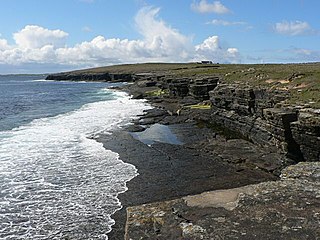
Papa Westray, also known as Papay, is one of the Orkney Islands in Scotland, United Kingdom. The fertile soil has long been a draw to the island.

The Northern Isles are a chain of islands off the north coast of mainland Scotland. The climate is cool and temperate and highly influenced by the surrounding seas. There are two main island groups: Shetland and Orkney. There are a total of 36 inhabited islands, with the fertile agricultural islands of Orkney contrasting with the more rugged Shetland islands to the north, where the economy is more dependent on fishing and the oil wealth of the surrounding seas. Both archipelagos have a developing renewable energy industry. They share a common Pictish and Norse history, and were part of the Kingdom of Norway before being absorbed into the Kingdom of Scotland in the 15th century. The islands played a significant naval role during the world wars of the 20th century.

George Mackay Brown was a Scottish poet, author and dramatist with a distinctly Orcadian character. He is widely regarded as one of the great Scottish poets of the 20th century.
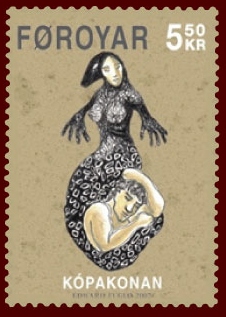
Selkies are mythological creatures that can shapeshift between seal and human forms by removing or putting on their seal skin. They feature prominently in the oral traditions and mythology of various cultures, especially those of Celtic and Norse origin. The term “selkie” derives from the Scots word for “seal”, and is also spelled as silkies, sylkies, or selchies. Selkies are sometimes referred to as selkie folk, meaning 'seal folk'. Selkies are mainly associated with the Northern Isles of Scotland, where they are said to live as seals in the sea but shed their skin to become human on land.
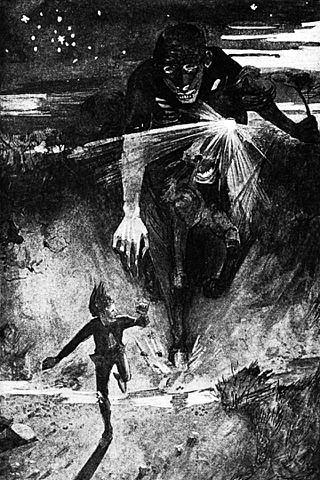
The nuckelavee or nuckalavee is a horse-like demon from Orcadian folklore that combines equine and human elements. British folklorist Katharine Briggs called it "the nastiest" of all the demons of Scotland's Northern Isles. The nuckelavee's breath was thought to wilt crops and sicken livestock, and the creature was held responsible for droughts and epidemics on land despite being predominantly a sea-dweller.

"The Great Silkie of Sule Skerry" or "The Grey Selkie of Sule Skerry" is a traditional folk song from Orkney and Shetland. Sule skerry being a far flung island of the Orkney archipelago. A woman has her child taken away by its father, the great selkie of Sule Skerry which can transform from a seal into a human. The woman is fated to marry a gunner who will harpoon the selkie and their son.
Walter Traill Dennison (1825–1894) was a farmer and folklorist. He was a native of the Orkney island of Sanday, in Scotland, where he collected local folk tales and other antiquites. Dennison recorded most of the information available about traditional tales told in Orkney, but to an extent "romanticised and systematised" parts of it in the process of transforming the stories into prose. Writing in 2004 and 2010 twenty-first century academics from the University of the Highlands and Islands and University of Glasgow indicate Traill Dennison "relied almost exclusively on the peasantry of his native island for the raw materials of his literary work" and he "provided us with some authentic traditions and that he got these, as he always claimed, directly from the Orkney peasantry". The Orcadian folklorist and antiquarian Ernest Marwick considered that Traill Dennison bridged the gap between the social classes and that he had an "affinity with the common people".
In Orkney folklore, Finfolk are sorcerous shapeshifters of the sea, the dark mysterious race from Finfolkaheem who regularly make an amphibious journey from the depths of the Finfolk ocean home to the Orkney Islands. They wade, swim or sometimes row upon the Orkney shores in the spring and summer months, searching for human captives. The Finfolk kidnap unsuspecting fishermen, or frolicking youth, near the shore and force them into lifelong servitude as a spouse.

Orcadians, also known as Orkneymen, are an ethnic group native to the Orkney Islands, who speak an Orcadian dialect of the Scots language, a West Germanic language, and share a common history, culture and ancestry. Speaking Norn, a native North Germanic language into the 19th or 20th century, Orcadians descend significantly from North Germanic peoples, with around a third of their ancestry derived from Scandinavia, including a majority of their patrilineal line. According to anthropological study, the Orcadian ethnic composition is similar to that of Icelandic people; a comparable islander ethnicity of North Germanic origin.
The Linton Worm is a mythical beast referred to in a Scottish Borders legend dating back to the 12th century. "Wyrm" is the Old Norse for serpent. A 12th-century writer believed it to be "In length three Scots yards and bigger than an ordinary man’s leg – in form and callour to our common muir edders." The myth is similar to that of the more famous Lambton Worm.
A nuggle, njuggle, or neugle, is a mythical water horse of primarily Shetland folklore where it is also referred to as a shoepultie or shoopiltee on some parts of the islands. A nocturnal creature that is always of a male gender, there are occasional fleeting mentions of him connected with the Orkney islands but he is more frequently associated with the rivers, streams and lochs of Shetland. He is easily recognised by his distinctive wheel-like tail and, unlike his evil counterparts the each-uisge or the nuckelavee, has a fairly gentle disposition being more prone to playing pranks and making mischief rather than having malicious intents.

The stoor worm, or Mester Stoor Worm, was a gigantic evil sea serpent of Orcadian folklore, capable of contaminating plants and destroying animals and humans with its putrid breath. It is probably an Orkney variant of the Norse Jörmungandr, also known as the Midgard Serpent, or world serpent, and has been described as a sea dragon.
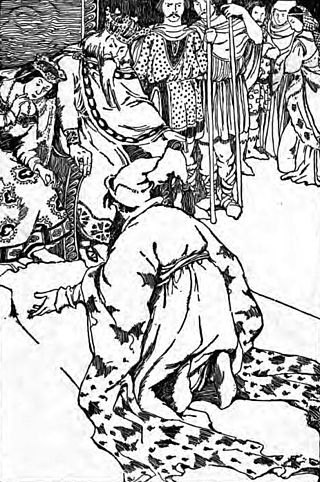
Assipattle and the Stoor Worm is an Orcadian folktale relating the battle between the eponymous hero and a gigantic sea serpent known as the stoor worm. The tale was preserved by 19th-century antiquarian Walter Traill Dennison, and retold by another Orcadian folklorist, Ernest Marwick, in a 20th-century version that integrates Dennison's texts with tidbits from other oral storytellers.

The 1594 trial of alleged witch Allison Balfour or Margaret Balfour is one of the most frequently cited Scottish witchcraft cases. Balfour lived in the Orkney Islands of Scotland in the area of Stenness. At that time in Scotland, the Scottish Witchcraft Act 1563 had made a conviction for witchcraft punishable by death.

Witchcraft in Orkney possibly has its roots in the settlement of Norsemen on the archipelago from the eighth century onwards. Until the early modern period magical powers were accepted as part of the general lifestyle, but witch-hunts began on the mainland of Scotland in about 1550, and the Scottish Witchcraft Act of 1563 made witchcraft or consultation with witches a crime punishable by death. One of the first Orcadians tried and executed for witchcraft was Allison Balfour, in 1594. Balfour, her elderly husband and two young children, were subjected to severe torture for two days to elicit a confession from her.

Elspeth Reoch was an alleged Scottish witch. She was born in Caithness but as a child spent time with relatives on an island in Lochaber prior to travelling to the mainland of Orkney.
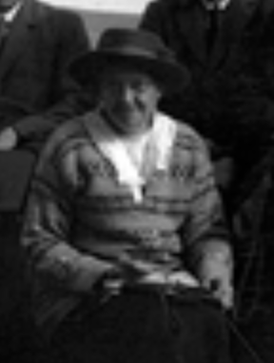
Christina Jamieson (1864–1942) was a British writer, playwright and suffragist known for her association with the Shetland Isles.
Mary Anne Baikie a Scottish suffragist who established the Orcadian Women's Suffrage Society (OWSS) and grew the membership and public interest in the debate, in the Orkney Isles, during the campaigns for Votes for Women.













